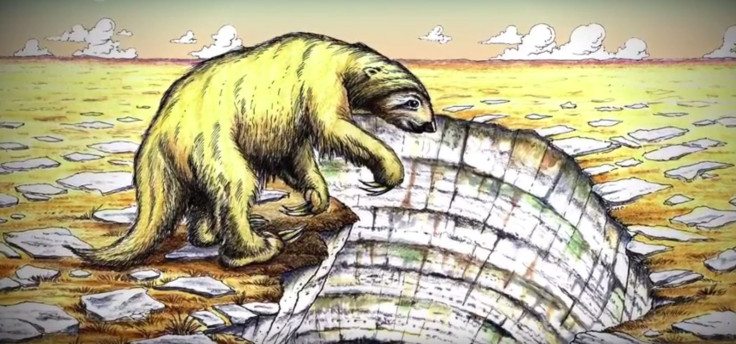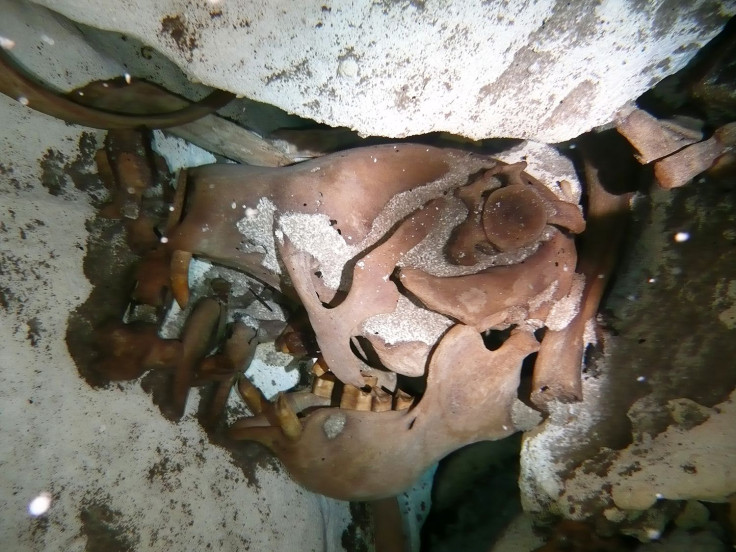Fossil Of 12,000-Year-Old Giant Sloth Discovered In Underwater Cave

Mexican scientists have discovered a new giant sloth species that lived about 12,000 years ago, after coming upon its fossilized remains at the bottom of a sinkhole.
According to the National Institute of Anthropology and History, or INAH for short, archaeologists have managed to collect some of the bones lying about 165 to 180 feet down in the water-filled pit, including the skull and jaw, some vertebrae, ribs and claws, as well as a few long bones. But others remain down there. The team hopes to bring them to the surface in the near future.
The scientists have named the extinct sloth — which belongs to a new genus as well as a new species — Xibalbaonyx oviceps after the cave-related Mayan underworld Xibalba; the Greek word for claws, “onyx,” because of that defensive feature common to sloths; and the Latin word “ovum” to refer to its egg-shaped skull.
Collecting more bones will give the scientists more information about what the giant sloth was like while it was alive, including its size, but for now the INAH has reported that this particular animal lived between 10,647 BCE and 10,305 BCE.
The sinkhole, known in Mexico as a cenote, where the giant sloth was found is located in the state Quintana Roo on the Yucatan Peninsula in the southeastern part of the country. That state is most well-known for the resort city Cancún and for its huge network of underwater caves.

In the cenote where this sloth was resting, which is called Zapote, archaeologists also brought up bones from a puma and a rodent, the INAH said.
A cave explorer first found the Xibalbaonyx in 2010 and after scientists collected and restored the bones and studied the specimen, they described it in the paleontological journal Paläontologische Zeitschrift. The restoration process included slowly drying out the remains.
The fossilized sloth has been nicknamed “Pote” after the sinkhole where it was discovered.
According to the INAH, the giant sloth probably fell down there when it was dry or when there wasn’t much water at the bottom, and the sinkhole later filled up — probably about 10,000 years ago, in the Early Holocene, as the water level of the Caribbean Sea increased and covered some of the peninsula.
As the archaeologists recover more of the fossil from the bottom of the sinkhole, “they’ll be putting the pieces together like a puzzle,” INAH spokesman Arturo Mendez told AFP.
Sloths are known as small or cute creatures now, but they were not so petite in the past. North and South America were home to dozens of species of huge sloths, dubbed “ground sloths” — as compared to the “tree sloths” of today.

Those enormous animals, some getting as big as 11 feet tall and 13,000 pounds, may have first emerged in the Americas about 9 million years ago and spread throughout the two continents but they mostly went extinct roughly 12,000 years ago, around the time the Xibalbaonyx specimen was alive and also around the time a lot of large land animals in the area went extinct, all at once.
© Copyright IBTimes 2024. All rights reserved.





















